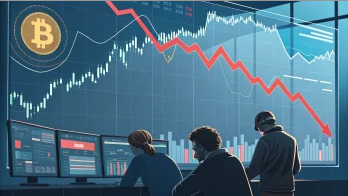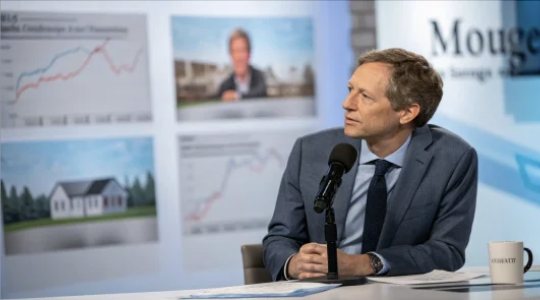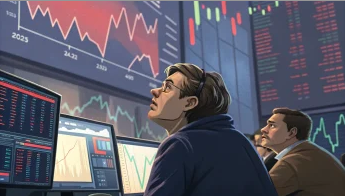A dramatic market event unfolded recently, showcasing how quickly stock prices fluctuate based on information—or misinformation. The S&P 500 experienced extreme volatility, with trillions in market value vanishing and reappearing within minutes.
Table of Contents
ToggleThe Market Rollercoaster Timeline
The day began with immediate trouble as the S&P 500 opened 3.4% lower at 9:30 AM. The initial drop was attributed to comments from Peter Navarro indicating that then-President Trump would not back down on tariffs. By 9:42 AM, the situation had deteriorated further, with stocks plummeting to 4.6% down in what observers described as “absolute panic.
Just a minute later, at 9:43 AM, the market experienced a mysterious reversal. A message in a Bloomberg chat claimed Trump was delaying tariffs by 90 days. This unconfirmed information triggered a massive swing in market sentiment.
The market reaction was swift and powerful:
- Within 30 minutes, the S&P 500 flipped from being down 4.5% to up 3.5%
- This represented approximately $4 trillion in market value erased and then regained
- Reporters scrambled to verify the information but couldn’t confirm the source
By 10:17 AM, the rally began to fade as doubts emerged about the rumor’s accuracy. Five minutes later, at 10:22 AM, the market completely reversed again, losing all of the 3.5% gain. At 10:25 AM, the White House officially confirmed the tariff delay story was “fake news.”
View this post on Instagram
The Aftermath
Despite the extreme volatility throughout the trading session, the S&P 500 closed down just 0.42% for the day. This relatively modest decline masked the extraordinary price swings that had occurred.
The source of the market-moving rumor became a point of contention. Reuters was initially blamed, but they in turn pointed to CNBC as the origin of the misinformation. This finger-pointing highlighted the challenges of information verification in fast-moving markets.
“Retail traders, on the other hand, left holding the bag all because a lie rang out louder than the truth.
Winners and Losers
The market chaos created clear winners and losers. Large financial institutions with high-frequency trading capabilities were positioned to profit from the extreme volatility. These sophisticated players could quickly respond to price movements, potentially earning significant profits during the rapid swings.
In contrast, retail investors were at a disadvantage. Without the same technology, information access, or reaction speed, many individual investors were “left holding the bag” as prices whipsawed back and forth.
The incident raises questions about market fairness and the impact of unverified information. In an era of instant communication, rumors can move markets before they can be properly verified, creating opportunities for those with advanced trading capabilities while putting others at risk.
This event is a stark reminder of how vulnerable modern markets can be to information—whether accurate or not—and how quickly billions in value can shift based on a single rumor.
Frequently Asked Questions
Q: How much market value was affected during this volatile trading session?
Approximately $4 trillion in market value was erased and then regained during the extreme price swings. This massive amount changed hands in just minutes, demonstrating the enormous scale of modern financial markets and their sensitivity to information.
Q: What caused the initial market drop that morning?
The initial 3.4% gap down at market open was attributed to comments from Peter Navarro, who stated on CNBC that Trump would not back down on tariffs. This triggered immediate selling pressure that accelerated to a 4.6% decline within the first 12 minutes of trading.
Q: Who benefited from this market volatility?
Large financial institutions with high-frequency trading capabilities were positioned to benefit from the extreme price swings. Their advanced technology allows them to react almost instantly to market movements, potentially profiting from both the decline and recovery. Meanwhile, retail investors typically lack these advantages and may have suffered losses trying to navigate the rapid changes.

















